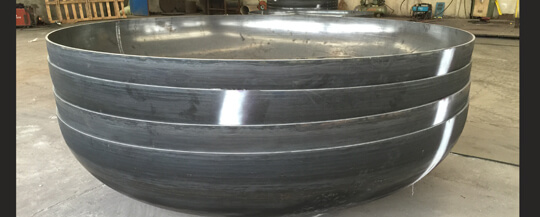As the carbon steel heads of petroleum installations are repaired during two or three years, the expansion of production scale, the deep extension of crude oil processing, the continuous development of new processes, and the heavy domestic crude oil, increased acid value, and increased crude oil imports along coastal river refineries And its sulfur content is higher, and the service life of the equipment is getting higher and higher.
H2S, Cl-, CO2, naphthenic acid, etc. have mainly constituted a serious threat to the safe operation of the equipment. Especially in large-scale oil refining, chemical, chemical fiber, fertilizer and other complete production units, various types of carbon steel heads account for about 20-40% of the entire equipment investment. From design to manufacturing, from use to maintenance, the problem of corrosion prevention has been Become the focus of common concern of business management and technology management. Because carbon steel heads not only have heat exchange between materials and powders, materials and water, but also have media that corrode the inside and outside of the equipment materials, as well as scaling and scouring. Such a complex process environment is impossible for other types of equipment.
At present, the practical anti-corrosion methods of carbon steel heads mainly include coating anti-corrosion, such as CH-784, urushiol titanium coating; coating anti-corrosion, such as Ni-P electroless plating; penetration anti-corrosion, such as aluminizing; material anti-corrosion, such as stainless steel, Titanium, etc. The comprehensive evaluation of the above-mentioned anticorrosive measures from various aspects such as durability, processability, and economical efficiency are not perfect. For example, in the medium containing S and Cl-, the carbon steel will be severely corroded, and the stainless steel will produce pitting corrosion and stress corrosion cracking, which cannot ensure the long-term safe operation of the heat exchanger. Organic-coated carbon steel heads generally require a certain thickness, require multiple coats and high-temperature baking, have complicated construction processes, and have poor temperature resistance. Especially for carbon steel heads of oil products, high-pressure steam is used for each maintenance, which is easy to cause coating damage. The Ni-P coated carbon steel head is an amorphous alloy, that is, metallic glass, which has high corrosion resistance (resistant to H2S, Cl-), high temperature resistance (can be used normally at 380 ℃), and resistance to erosion and abrasion. (Has a certain hardness), good heat transfer (with drip condensation effect), anti-fouling (smooth surface) and other excellent characteristics. It is proved that the coated carbon steel head has a good effect in the industrial. Therefore, Ni-P electroless-plated carbon steel heads have gradually become favored by petrochemical companies. It is reported that the output value of electroless Ni-P plating applied to the petrochemical industry in western countries exceeds 100 million US dollars. China's domestic petrochemical industry accounts for more than 50% of the chemical Ni-P market share.
